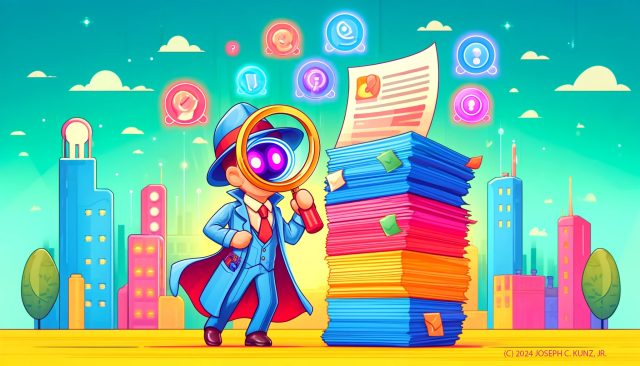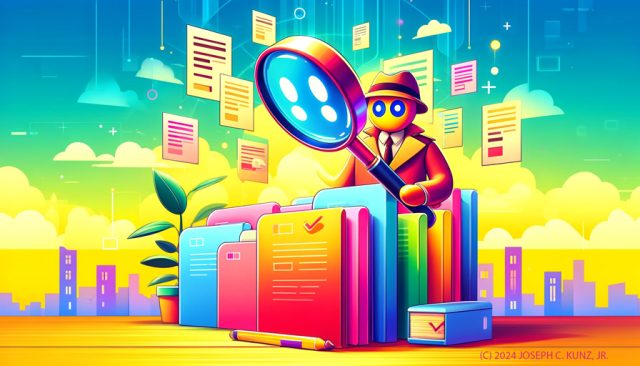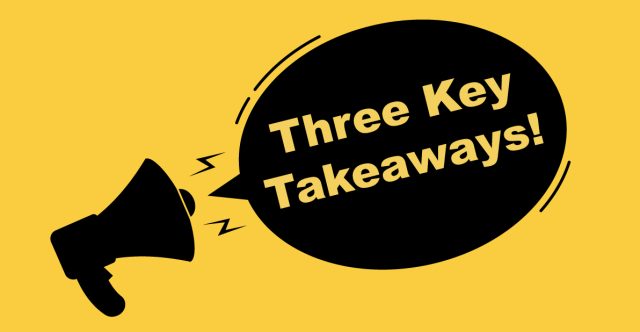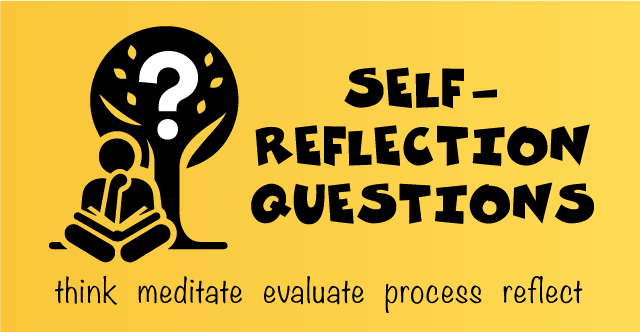Subtitle
A Guide to Understanding Plagiarism Checkers and AI Detectors
Table of Contents
Synopsis
What You Will Learn from This Article
Introduction
Part I. Plagiarism Checkers
-
A. How They Work
B. Limitations
C. Why They Are Important
D. The Role They Play in Today’s Writing
E. Final Word About Plagiarism Checkers
Part II. AI Content Detectors
-
A. How They Work
B. Limitations
C. Why They Are Important
D. The Role They Play in Today’s Writing
E. Final Word About AI Detectors
Conclusion
Key Takeaways from This Article
Self-Reflection Questions
Synopsis
This article explores the crucial roles of plagiarism checkers and AI content detectors in modern writing. It explains how these tools ensure originality and detect AI-generated content, highlighting their importance in maintaining authenticity and a human touch in digital content creation. The piece provides insights into how these technologies operate, their significance, and their impact on writers and content managers navigating the digital landscape.
What You Will Learn from This Article

1. Differences Between Plagiarism Checkers and AI Content Detectors
Understand the functions and principles behind plagiarism checkers and AI detectors and how they address specific challenges in maintaining content authenticity.
2. Importance of These Tools in Modern Writing
Explore the critical roles these technologies play in safeguarding the integrity and originality of texts across various fields, from academia to creative writing.
3. Strategies for Using These Tools Effectively
Gain practical insights into effectively utilizing plagiarism checkers and AI content detectors to produce content that is not only engaging but also ethically sound and trustworthy.
Introduction
In the digital age, content creation is omnipresent—from academic essays to blog posts and corporate reports to creative writing. As the content volume grows, so does the complexity of managing its authenticity and originality. Two tools have become essential for writers, educators, and content managers: (1) plagiarism checkers and (2) AI content detectors. While both serve to uphold the integrity of written work, they operate on distinct principles and address different challenges.
Plagiarism checkers have long been the guardians of originality, helping to ensure that the text we read, study, or evaluate remains free from uncredited borrowing. On the other hand, the rapid evolution of artificial intelligence has introduced a newer dimension to content verification—detecting text generated by AI. As AI-generated content becomes more sophisticated and pervasive, distinguishing between human and machine authorship is no longer just an academic exercise but a necessary discernment for maintaining the human touch in our communications.
This article delves into the fundamental differences between plagiarism checkers and AI content detectors, exploring how they work, why they are essential, and their roles in modern content creation. By understanding these differences, writers and content creators can better navigate the challenges of producing authentic, engaging, and trustworthy content in an increasingly automated world.

What is the difference between a plagiarism checker and an AI content detector?
Both plagiarism checkers and AI content detectors are tools used to analyze text. Still, they serve different purposes and operate based on different principles:
Part I. Plagiarism Checkers
Plagiarism checkers are essential to identify cases where text has been copied or closely paraphrased from other sources without proper citation. They are extensively utilized across academic, professional, and publishing environments to verify the originality of written content and prevent plagiarism.
A. How They Work
Plagiarism checkers are sophisticated software tools that employ various methods to ensure text authenticity. Understanding the operational mechanics of these systems highlights how they maintain high standards of integrity in written content. Here is a breakdown of how these tools function.
1. Text Analysis
Upon submission, these tools analyze the text by comparing it against a comprehensive database that includes many published works—books, academic papers, websites, and other forms of digital content.
2. Comparison and Detection
They scan for exact matches and close similarities in phrases, sentences, or paragraphs to identify potential instances of plagiarism.
3. Reporting
The typical output from these tools is a detailed report highlighting suspected plagiarism instances and providing links or references to the sources, aiding further verification.
4. Contextual Analysis
Plagiarism checkers also evaluate the context within which words or phrases are used. This analysis helps distinguish between common knowledge and plagiarized content. These tools can more accurately assess whether text sections are used without proper attribution by analyzing how information is framed and presented.
B. Limitations
While plagiarism checkers are invaluable tools for maintaining the integrity of written work, they are not without their shortcomings. These limitations can sometimes compromise the effectiveness of these tools in various contexts. Here are some of the notable constraints.
1. Modification Detection
Plagiarism checkers may not successfully detect if the text has been significantly altered from the original or originates from sources not included in their databases.
2. Intent Assessment
These tools cannot discern the intent behind the text similarities, whether the copying was accidental or deliberate, which can sometimes lead to misunderstandings about the nature of the plagiarism.
3. Language and Translation Issues
Plagiarism checkers may struggle to identify plagiarism in texts translated from one language to another. This difficulty is because subtle nuances and shifts in meaning during translation can mask similarities that would otherwise be detected in the original language.
4. Limited Access to Closed Databases
Some sources of content, such as proprietary journals, books, or databases that require subscriptions, may not be included in the databases that plagiarism checkers scan. This limitation can prevent these tools from detecting instances of plagiarism if the original content is only available in these restricted-access resources.
C. Why They Are Important
Plagiarism checkers play a crucial role in upholding academic integrity, protecting intellectual property, and ensuring fair practices in both educational and professional settings. Their importance stems from several key benefits:
1. Promoting Ethical Writing Practices
By detecting plagiarized content, these tools discourage dishonest practices and encourage individuals to respect other’s work by citing sources properly.
2. Upholding Quality of Information
In academia and research, the credibility of information is paramount. Plagiarism checkers help maintain the quality and reliability of scholarly articles and research papers by ensuring that all sources are accurately credited.
3. Legal and Professional Standards
In many professions, especially law and journalism, the accuracy and originality of written content are legally and ethically required. Plagiarism checkers help professionals meet these standards and avoid the legal repercussions of copyright infringement.
4. Educational Development
For students, using plagiarism checkers is an educational tool that teaches them how to quote, paraphrase, and attribute sources correctly, which are essential skills in academic writing.
D. The Role They Play in Today’s Writing
In today’s digital age, where content can be easily accessed, copied, and republished, plagiarism checkers are more vital than ever. They serve several significant roles:
1. Quality Control in Publishing
Publishers use plagiarism checkers to ensure their content is original and free from unauthorized copied material, thereby maintaining their reputation and credibility.
2. Tool for Content Creators
Bloggers, writers, and journalists rely on plagiarism checkers not only to avoid unintentional plagiarism but also to verify the originality of their work before publication, ensuring that their output is unique and respects intellectual property laws.
3. Academic Integrity
Educational institutions employ these tools to check students’ assignments and research papers, which helps instill a culture of honesty and integrity in academic environments.
4. Prevention of Content Theft
With the increase in digital content creation, the risk of content theft has risen. Plagiarism checkers help content creators protect their work from being used without authorization or attribution.
E. Final Word About Plagiarism Checkers
Overall, plagiarism checkers are integral to maintaining the ethical standards and integrity of written content across various fields, ensuring that the proliferation of digital content does not compromise the quality and originality of the material.

Part II. AI Content Detectors
AI content detectors are designed to determine whether an artificial intelligence likely generated a piece of text. This detection is becoming increasingly important because AI-generated content proliferates across all media platforms.
A. How They Work
1. Pattern Recognition:
AI detectors analyze text for patterns typical of AI-generated content, such as repetitive phrasing or unusual syntax, which are rare in human writing.
2. Machine Learning Models
These detectors employ sophisticated machine learning algorithms trained on large datasets of human-written and AI-generated texts to improve their accuracy in differentiation.
3. Linguistic Analysis
The software examines the text’s structure, style, and complexity, looking for signs that might not naturally occur in human writing.
4. Probability Assessment
After analysis, these tools provide a probability score indicating the likelihood that a piece of content was generated by AI, helping users gauge its authenticity.
B. Limitations
AI content detectors, while helpful, have several limitations that can affect their effectiveness.
1. Evolving AI Capabilities
As AI writing tools become more sophisticated, they can mimic human writing styles more closely, making detection more challenging.
2. False Positives/Negatives
These tools can sometimes incorrectly label human-written content as AI-generated or fail to detect advanced AI texts, leading to errors in verification.
3. Dependence on Training Data
The accuracy of AI detectors depends heavily on the quality and variety of the data they were trained on, which can limit their effectiveness if the data is not comprehensive.
4. Lack of Contextual Understanding
AI detectors might miss contextual cues that humans naturally use to interpret text, which can skew their assessments.
C. Why They Are Important
AI content detectors are increasingly crucial in a digital landscape where AI-generated content is becoming more common.
1. Authenticity Assurance
These tools help ensure that humans create content genuinely, maintaining authenticity, which is especially important in journalism and academia.
2. Preventing Misinformation
By identifying AI-generated content, these tools can help prevent the spread of misinformation, often propagated using synthetic texts.
3. Intellectual Property Protection
Detecting AI-generated content helps protect the intellectual property rights of original content creators by identifying and flagging potential misuse of AI in content generation.
4. Regulatory Compliance
With increasing legal and ethical concerns around AI-generated content, these detectors are vital for compliance with regulations that require disclosure of AI involvement in content creation.
D. The Role They Play in Today’s Writing
AI content detectors are becoming an integral part of the content creation and verification process.
1. Media and Journalism
In an era of fake news, these tools help journalists verify the authenticity of their sources and ensure that their reports are based on human insight.
2. Academic Research
Academics use AI detectors to distinguish between student-written and machine-generated assignments, ensuring academic integrity.
3. Content Marketing
Marketers use these tools to maintain a human touch in their content, which is crucial for building genuine customer relationships.
4. Literary and Creative Fields
Authors and creators can use AI detectors to certify their works are original and not AI-generated, preserving human creativity and value.
E. Final Word About AI Detectors
In essence, AI content detectors are fundamental in distinguishing the authenticity of digital content, ensuring that the expanding presence of AI-generated texts does not undermine the genuineness and human essence of written works. These tools are crucial for upholding the integrity and reliability of content across diverse platforms, enabling readers and consumers to trust the origin and authenticity of the information they receive.
Conclusion
In the ever-expanding realm of digital content, the roles of plagiarism checkers and AI content detectors have become increasingly crucial. These tools safeguard the authenticity and originality of written work and ensure that the invaluable human element remains intact in our communications.
As we’ve explored, plagiarism checkers serve as diligent guardians against uncredited borrowing, fostering a culture of integrity and respect for intellectual property. Meanwhile, AI content detectors address the modern challenges posed by the advent of sophisticated machine-generated texts, helping to distinguish the human authorship that connects more deeply with readers.
For writers, educators, and content managers, understanding and effectively utilizing these tools is essential for navigating the complexities of today’s digital landscape. Ensuring that content is original and authentically human, these technologies help maintain trust and credibility in all forms of writing—from academic research to creative storytelling.
As we move forward, the intelligent application of these tools will be vital in shaping a landscape where creativity flourishes and ethical standards are upheld, allowing for innovation and integrity in all our written endeavors.

Key Takeaways from This Article
1. Essential Role of Technology in Content Verification
Plagiarism checkers and AI content detectors are vital for maintaining the integrity and originality of digital content, helping to differentiate human-authored texts from those generated by AI.
2. Impact on Writing and Publishing
Understanding the significant influence these tools have on promoting ethical standards and preventing the spread of uncredited and AI-generated content in the writing and publishing industries is paramount.
3. Navigational Tools for a Digital Age
Writers and content creators can leverage these technologies to navigate the complexities of a digitalized world, ensuring their work remains authentic, honest, and high quality.

Self-Reflection Questions
Here are three self-reflection questions that can help you consider the impact of using plagiarism checkers and AI text checkers on your writing process:
1. How have plagiarism and AI text checkers influenced your approach to research and sourcing information?
Reflect on whether these tools have made you more diligent in verifying sources, encouraged broader research, or changed how you integrate and cite information in your writing.
2. How have these tools affected your understanding and management of originality and authenticity in my writing?
Consider how these technologies have heightened your awareness of originality in your work, potentially altering how you formulate ideas or blend information from various sources.
3. What improvements or limitations have you noticed in your writing since incorporating plagiarism and AI text checkers into your workflow?
Evaluate the effectiveness of these tools in helping you refine your writing style, enhance clarity, and maintain the integrity of your content. Also, think about any challenges or dependencies that might have arisen from their use.
May your dedication to your craft bring you closer to your dreams with each word you write, Joe.


